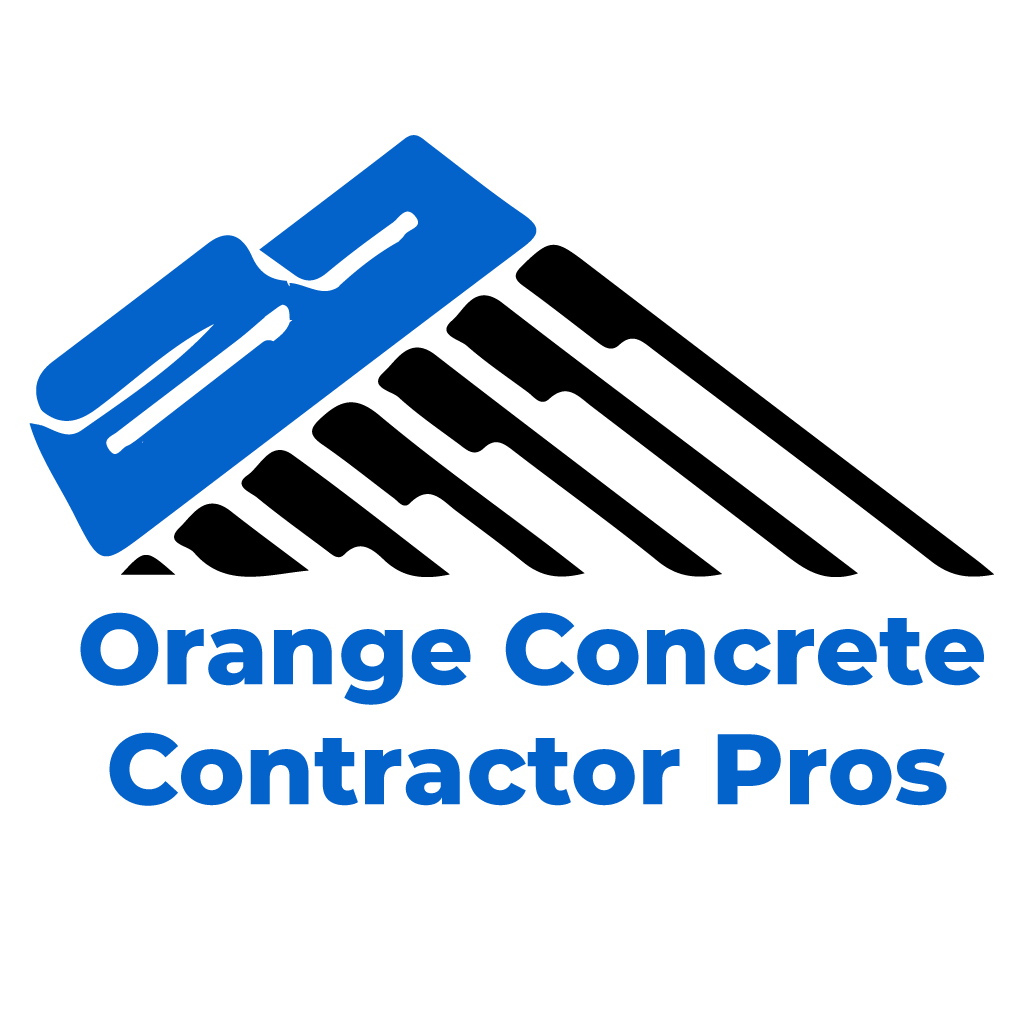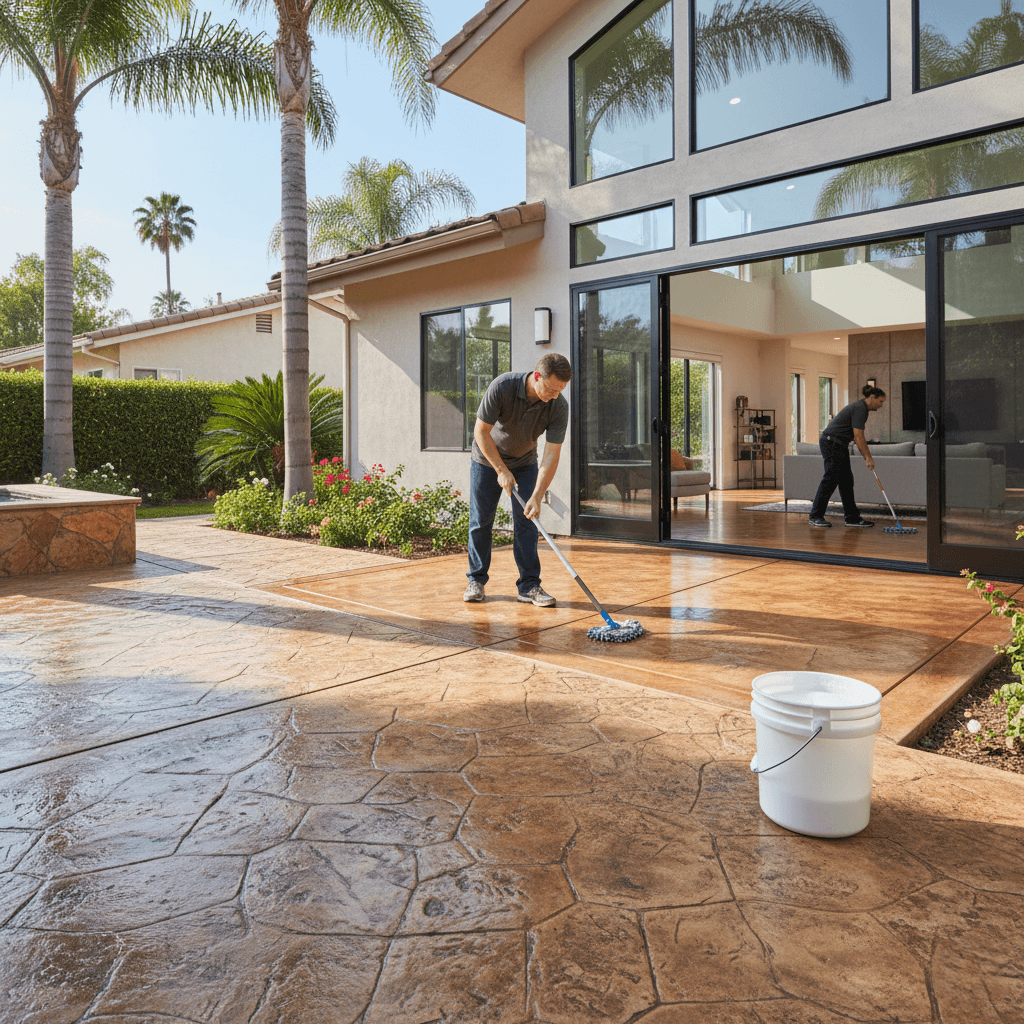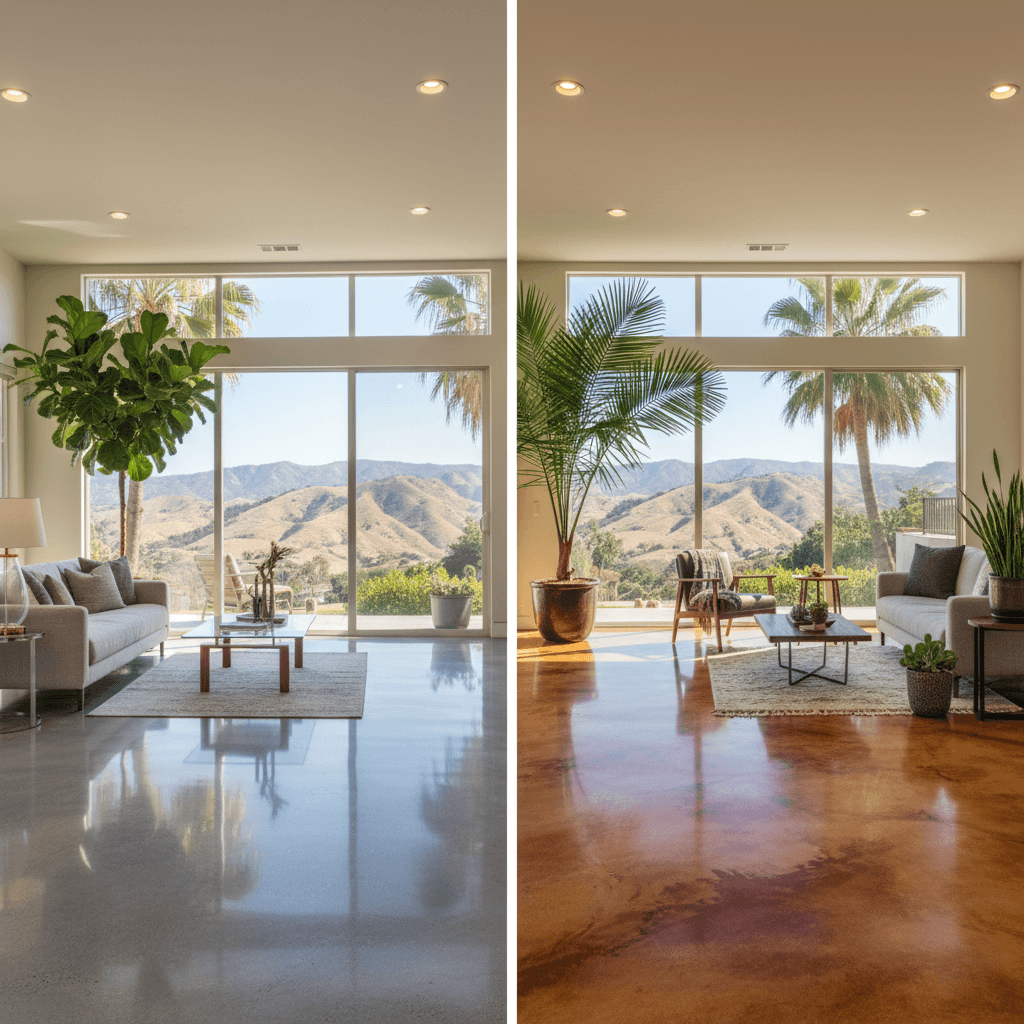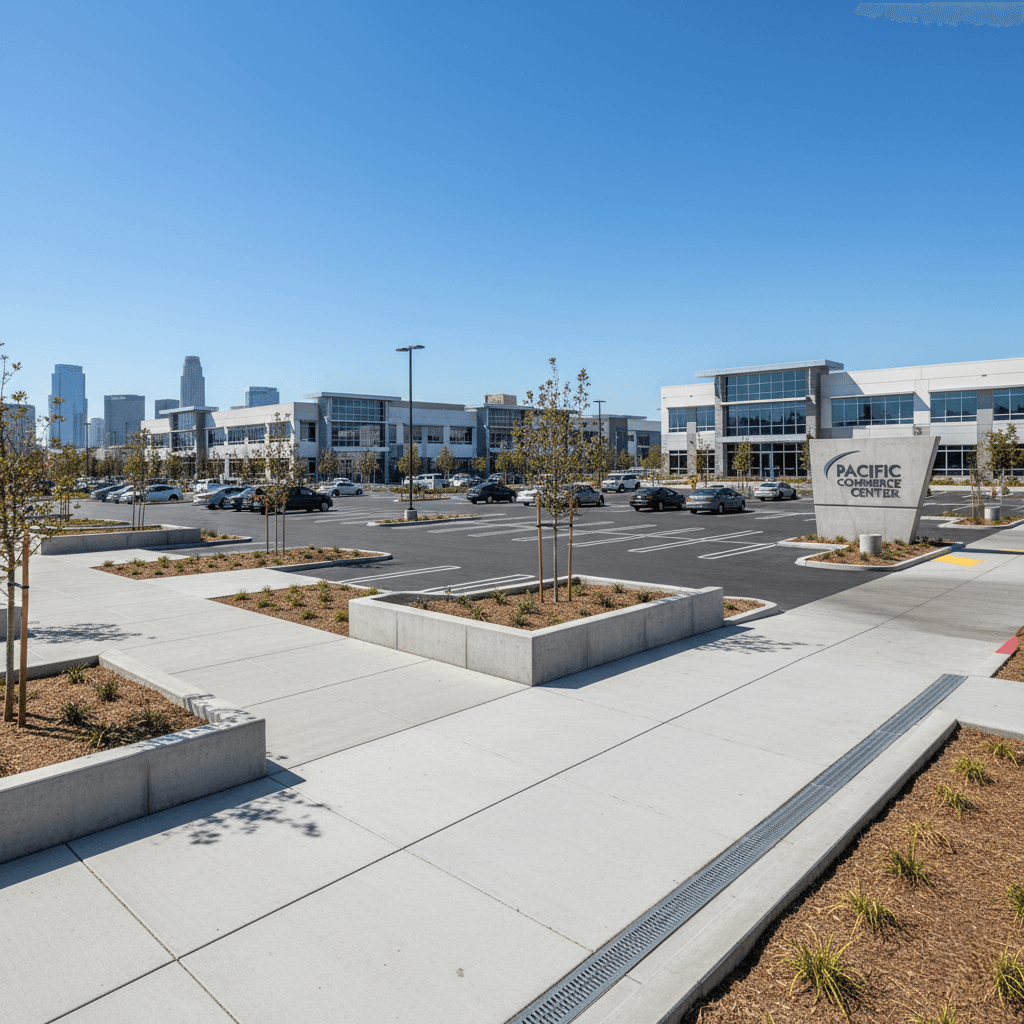
How to Pour a Concrete Slab for Outdoor Structures in Orange, CA
Concrete Slab Orange
Orange, CA homeowners planning outdoor structures require properly poured concrete slab foundations that withstand California’s unique climate conditions and soil characteristics. Professional concrete slab installation ensures structural integrity while meeting local building code requirements throughout Orange County. Understanding the complete process from site preparation through final finishing helps property owners make informed decisions about their construction projects. Proper techniques prevent common issues like cracking, settling, and moisture damage that can compromise outdoor structure stability. Strategic planning and execution create durable foundations that support gazebos, sheds, outdoor kitchens, and other backyard improvements for decades.
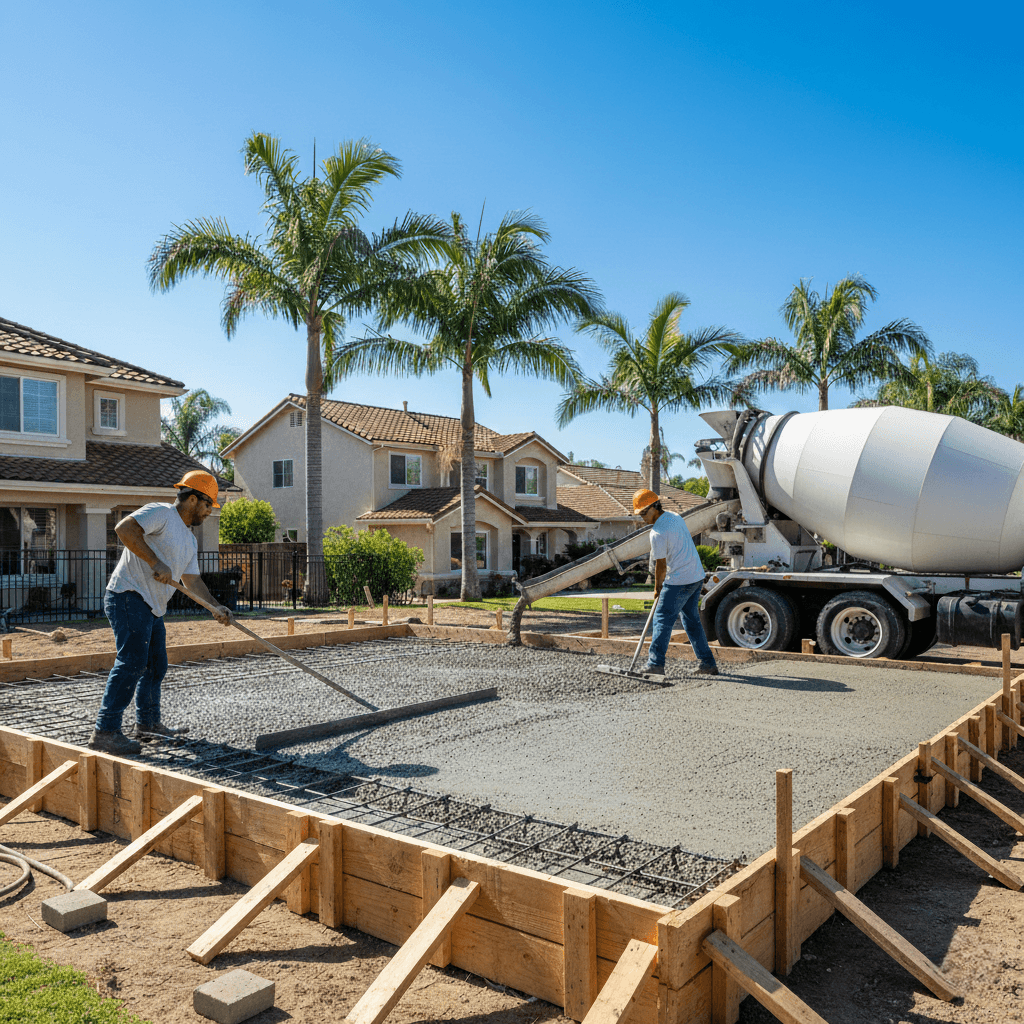
Site Assessment and Preparation Requirements
Orange County’s diverse soil conditions require thorough assessment before beginning concrete slab projects, particularly in areas with clay content that expands and contracts with moisture changes. Professional soil evaluation determines proper excavation depth and base material requirements for optimal foundation performance. Properties near Villa Park and Anaheim Hills often encounter varying soil types that influence preparation strategies.
Site preparation begins with accurate marking using stakes and string to outline exact slab dimensions and ensure proper placement relative to existing structures. Excavation depth typically ranges from 6-8 inches for residential outdoor structures, though load-bearing applications may require deeper preparation. Proper drainage planning prevents water accumulation that could undermine foundation stability throughout Orange’s occasional heavy rainfall periods.
Excavation and Base Material Installation
Careful excavation removes grass, topsoil, and debris while creating level surfaces that support uniform concrete slab thickness. Orange County’s building standards require a minimum 3.5-inch concrete thickness for slabs supported directly on ground, with thicker applications needed for heavy structures. Mechanical compaction ensures a stable subgrade that resists settling and movement over time.
Quality gravel base installation provides essential drainage and structural support beneath concrete slabs. A 4-6 inch compacted gravel layer works well for most residential applications, though areas with problematic soil may require deeper bases. Each 2-inch gravel lift requires thorough compaction before adding subsequent layers, ensuring maximum density and stability for long-term performance.
Form Construction and Reinforcement Placement
Precision formwork defines concrete slab boundaries while containing liquid concrete during placement and initial curing. Lumber forms must be level, square, and properly braced to withstand concrete pressure without movement or distortion. Stakes placed every 2-3 feet provide adequate support, with tops trimmed flush to form height for smooth finishing operations.
Steel reinforcement significantly improves concrete slab durability and crack resistance, particularly important in Orange County’s seismic environment. Half-inch rebar arranged in grid patterns or welded wire mesh provides tensile strength that concrete lacks naturally. Reinforcement placement in the upper third of slab thickness offers optimal protection against surface cracking and structural failure.
Concrete Mix Specifications and Weather Considerations
Orange, CA’s climate demands concrete mixes designed for local temperature ranges and exposure conditions. Minimum 4,500 psi compressive strength concrete with Type V cement provides enhanced durability against sulfate exposure common in some Orange County soil conditions. Air entrainment may be necessary for outdoor slabs exposed to freeze-thaw cycles during the winter months.
Optimal pouring conditions include temperatures above 50°F with dry weather forecasts for at least 24 hours following placement. Orange County’s occasional Santa Ana winds can accelerate surface drying, requiring wind barriers or misting to prevent rapid moisture loss. Summer heat may necessitate early morning pours or evening scheduling to avoid excessive evaporation during finishing operations.
Pouring Techniques and Initial Finishing
Strategic concrete placement begins at one end of the form, working systematically to the opposite end while maintaining consistent thickness throughout the slab. Vibration or rodding eliminates air pockets and ensures complete consolidation around reinforcement materials. Large slabs may require sectional pours to maintain workability and finishing quality.
Screeding levels concrete surfaces using straight boards drawn across form tops, creating uniform thickness and removing excess material. This critical step establishes proper grades and slopes needed for drainage away from adjacent structures. Multiple screeding passes may be necessary to achieve the desired smoothness and eliminate high or low spots.
Surface Finishing and Texture Application
Bull floating follows screeding operations, smoothing concrete surfaces while bringing cream to the top for optimal finishing. Timing is crucial – floating too early disturbs aggregate settlement, while delayed floating creates difficult finishing conditions. Orange County’s dry climate may require accelerated floating schedules compared to more humid regions.
Final surface textures enhance safety and aesthetic appeal while providing slip resistance for outdoor applications. Broom finishes work well for utilitarian structures, while decorative options include stamping or exposed aggregate treatments. Edging tools create a clean, finished appearance along form lines while preventing chipping and spalling at slab perimeters.
Curing and Quality Control Measures
Proper curing maintains adequate moisture and temperature conditions for optimal concrete strength development over time. Orange County’s dry climate accelerates moisture loss, making curing compounds or plastic sheeting essential for quality results. Minimum seven-day curing periods ensure adequate strength gain before removing forms or applying loads.
Control joints prevent random cracking by creating predetermined failure planes in concrete slabs. Joint spacing should not exceed 2-3 times the slab thickness in feet, with joints cut to 25% of the total slab depth. Proper joint timing and placement significantly reduce maintenance requirements throughout the concrete slab’s service life.
Code Compliance and Professional Installation
Orange County building codes mandate specific requirements for concrete slab construction, including thickness, reinforcement, and inspection protocols. Permit requirements vary based on structure size and intended use, with professional installation often required for larger projects. Compliance ensures safety while protecting property values and insurance coverage.
Orange Concrete Contractor Pros specializes in professional concrete slab installation that meets all local building standards while delivering superior craftsmanship for outdoor structure foundations. Our experienced team handles every aspect from site preparation through final finishing, ensuring durable results that support your outdoor living goals while withstanding Orange County’s environmental challenges for years of reliable service.
